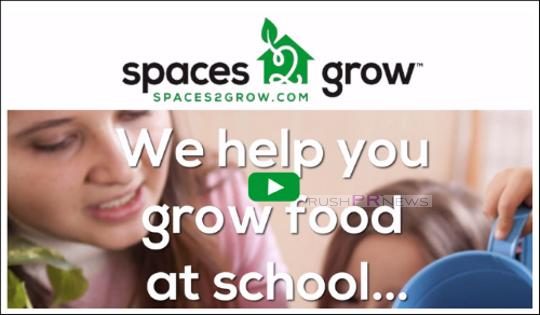– Spaces2Grow spent over two years developing their new Scholastic Platform so any teacher, regardless of gardening experience, could teach kids about growing food.
Now, teachers across the U.S. and Canada have quickly begun adopting the Scholastic GrowPaD planning & design tool and suite of automated-advisors for their edible gardening programs.
The introduction of the platform on March 1st, set off an immediate flurry of registrations and now teachers coast-to-coast are discovering how the Scholastic Platform simplifies and streamlines planning spaces and plantings; managing crop records, calendars, and To-dos; enables student-teacher communication; tracks student activities and results, and most importantly, provides the start-to-harvest guidance and support both teachers and students need to succeed.
Leila Mireskandari, founder of Kids Growing City, teaches educators teaches educators how to design, develop curricula and plan edible school gardens. She says, “Spaces2Grow’s new Scholastic Membership is the perfect complement to any school gardening program. It takes over where curriculum planning leaves off, and provides all the ongoing guidance and support both teachers and students need to garden successfully and learn by growing.”
Studies show that students who grow food do better in school; that food gardens contribute to environmental sustainability and that gardeners tend to be healthier, happier people…all good reasons for every school to have a garden. And the Spaces’2Grow’s scholastic platform makes that possible.
The highlight is the new GrowPaD™ graphic planning and design tool that makes it easy for teachers to map out the features and growing conditions of indoor or outdoor areas with drag-and-drop shapes. Then automated-advisors use the map details to suggest the best-growing spaces and crops for each location on the area map, to students or teachers.
Containers, square-foot boxes, and aquaponic systems are a few of the dozen different types of growing spaces that could be recommended by the automated-advisors. Crop suggestions might include commonly grown fruits, vegetables and herbs as well as other, often-overlooked crops like edible flowers and native plants.
As users choose and arrange their spaces and crops on the GrowPaD, the Spaces2Grow automated-advisors work behind the scenes to create itemized calendars of activities for each crop; update records and prepare weekly, personalized To-do lists for delivery to students’ inboxes every Friday.
Students can also take advantage of a personal journaling tool to track and share activities, observations, and questions with their teacher. And teachers can use the journal tool to distribute and collect assignments, quizzes, and more. Plus all of the students’ space and crop choices and their growing plans, To-dos and journal entries are tracked on the teacher dashboard, making it easy for the teacher to monitor activity and provide feedback.
Leigh Taylor, spokesperson for Spaces2Grow explains: “We wanted to make it super easy for teachers who already have “green thumbs” to manage their school gardening programs and for “newbies” to implement an edible gardening curriculum. Plus make it easy and fun for students to design their growing spaces, choose their crops and learn by doing.
“The new Scholastic Membership platform GrowPaD™ does all of that, and a bit more. We really believe it will make growing food easier and more fun for educators and students across the United States and Canada, and it seems it already is.”
Spaces2Grow offers a Free 21 day Trial of the entire Scholastic membership platform including the GrowPad™, automated-advisors, customized crop calendars and personalized weekly To-do reminders. An annual membership which includes a teacher account and 30 reusable, student logins is just $60/year. Personal Premium accounts are also available for $25/year.
Space2Grow: https://spaces2grow.com/




